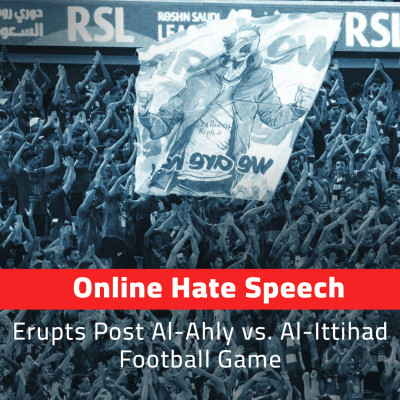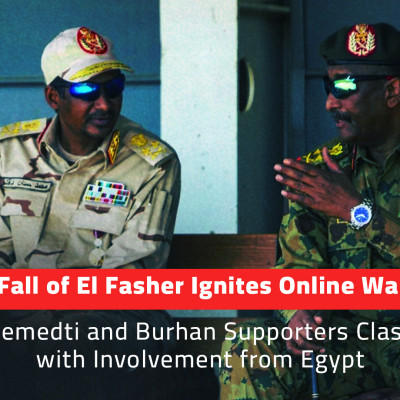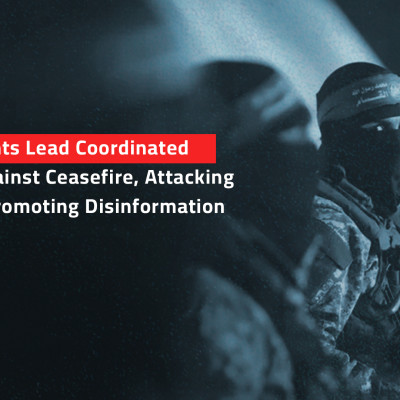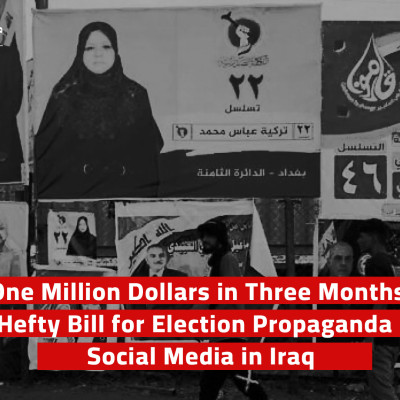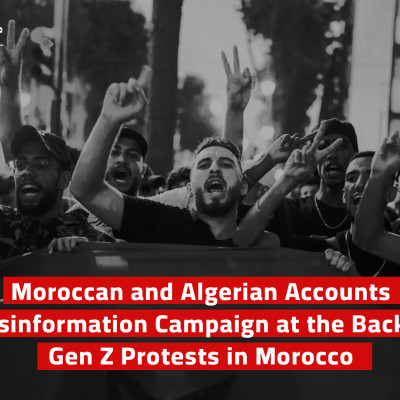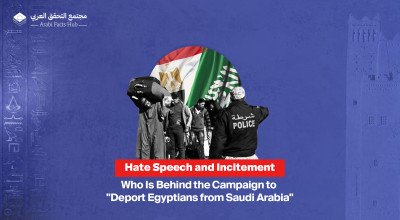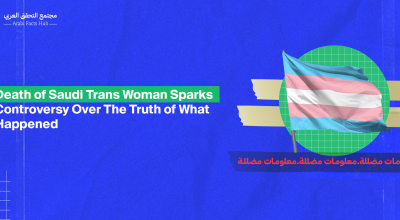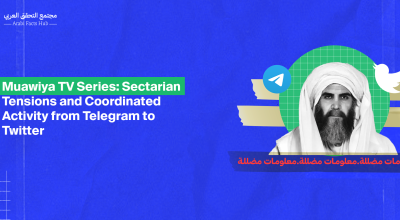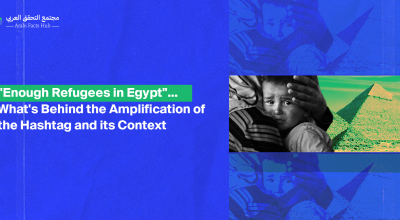"Qatar Sold Out Hamas": Shiite Groups Promote Conspiracy Theory After Israeli Raid
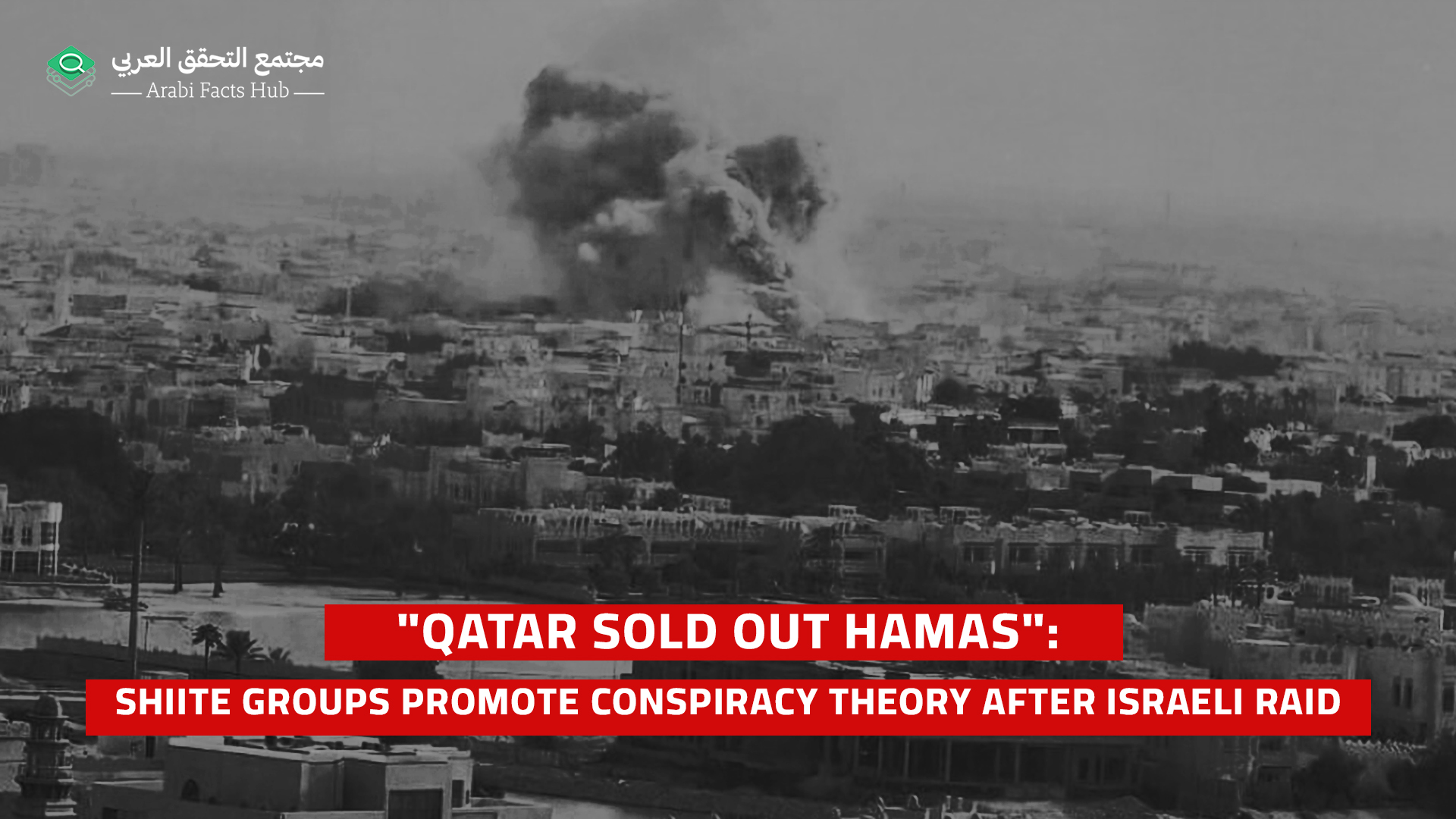
On the afternoon of September 9, 2025, the Qatari capital, Doha, was shaken by a violent explosion following an Israeli airstrike that targeted the Katara area, where members of the Hamas negotiating delegation reside.
Following the Israeli raid, hashtags spread on "X", including: #قطر_باعت_حماس (Qatar Sold Out Hamas), #دفاعات_قطر_نايمه (Qatar's Defenses Are Asleep), and #تميم_عميل_إسرائيل (Tamim is An Agent of Israel), accompanied by criticism of the performance of Qatar's air defense systems.
Arabi Facts Hub's analysis of this campaign revealed a coordinated effort. The campaign was primarily driven by accounts that support Iranian-backed Shiite groups.
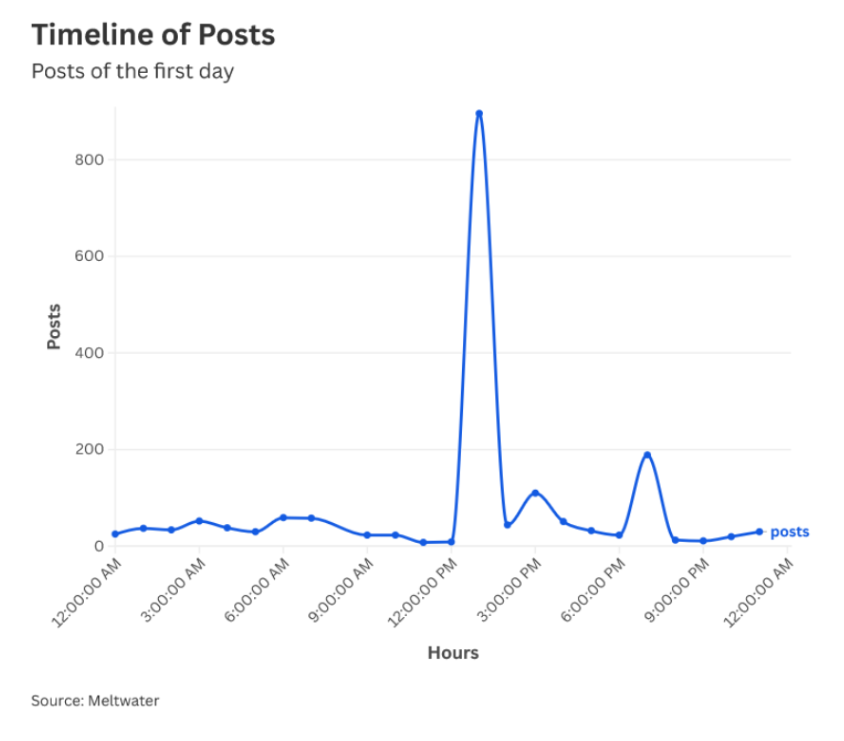
Overall Context
Activity around the hashtag #قطر_باعت_حماس (Qatar Sold Out Hamas) began on X on the morning of Tuesday, September 9, 2025, with the first post recorded at 09:25 UTC. Over the next two days, the hashtag generated a total of 1,815 posts, reaching an estimated 7.8 million accounts, according to coverage data.
The peak occurred on Wednesday, September 10, before activity gradually declined. Alongside the main hashtag, several others appeared simultaneously—such as #دفاعات_قطر_نايمه (Qatar’s Defenses Are Asleep) and #تميم_عميل_إسرائيل (Tamim Is an Agent of Israel)—which also spiked during the same peak hours before subsiding later.
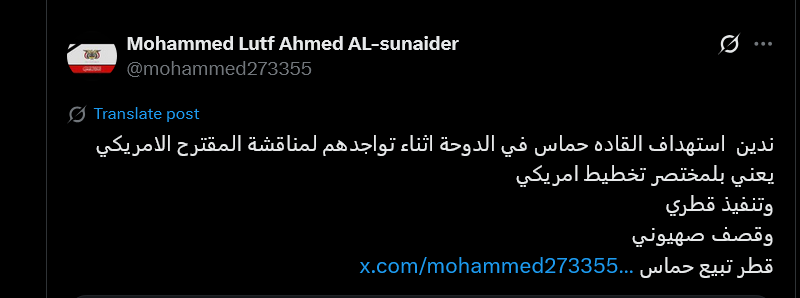
Interaction type data showed that original content constituted about 67% of total posts, compared to about 20% reposts, approximately 9% replies, and about 4% quotes.
Discourse Analysis
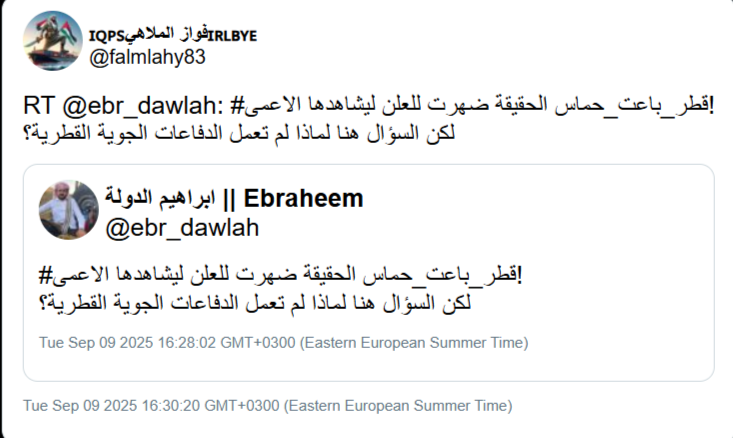
Analysis of campaign data revealed frequently used words and phrases, with the main hashtag #قطر_باعت_حماس (Qatar Sold Out Hamas) appearing prominently alongside recurring terms like “the strike,” “Doha,” and “Israel.”
Hundreds of posts frequently recycled a mocking narrative against Qatar, using expressions such as "Qatar betrayed," "Qatar sold out," and "Tamim is a traitor."
The main hashtag was also linked to others that accompanied and amplified the campaign, most notably #دفاعات_قطر_نايمه (Qatar’s Defenses Are Asleep) and #تميم_عميل_إسرائيل (Tamim Is an Agent of Israel), along with religious and Shia political hashtags such as #مولد_النبوة_والإمامة (Birth of the Prophet and the Imamate) and #غزة_تباد_وتحرق (Gaza Is Being Exterminated and Burned).
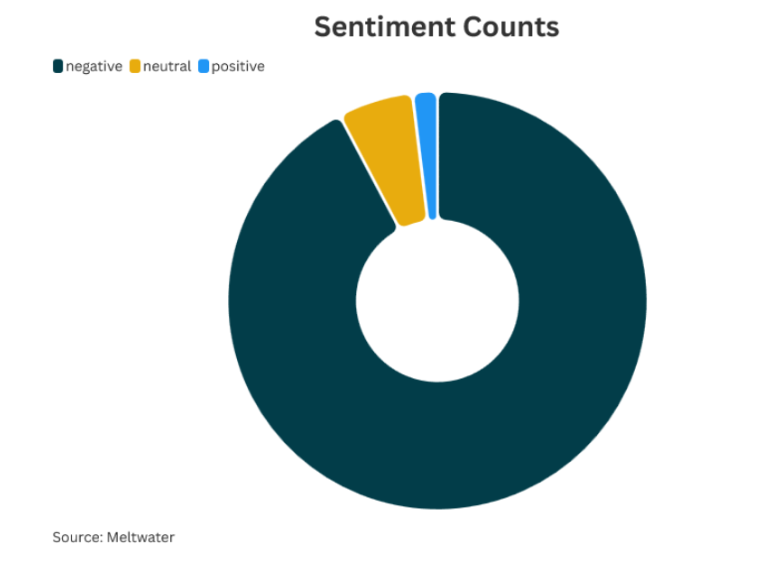
As for the sentiments, it became clear that the discourse carried an overwhelming majority of negative connotations. Offensive texts and mockery of Qatar's military capabilities or its position as a political mediator dominated the scene.
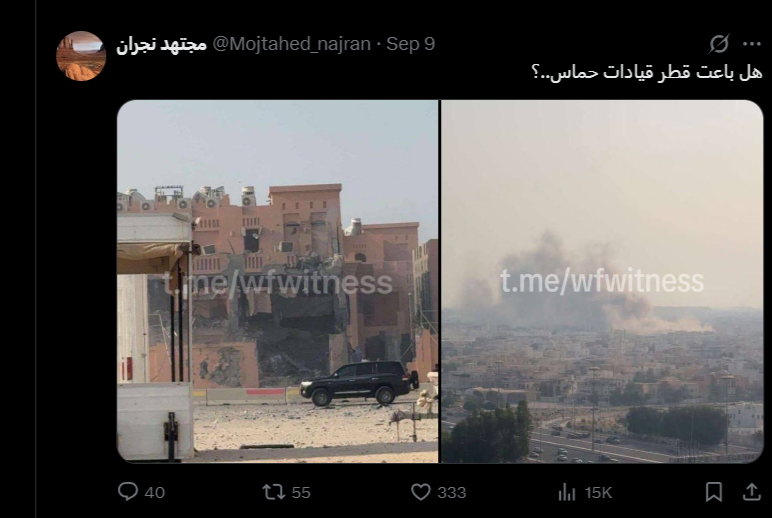
Geographical Scope of the Campaign
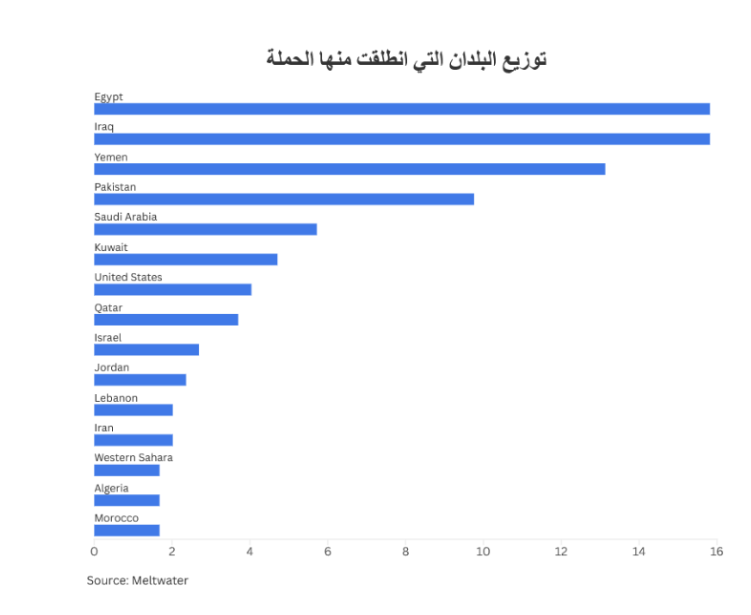
The geographical analysis of posts from known sources (297 posts) reveals a clear concentration in three main Arab countries: Egypt, Iraq, and Yemen. Egypt and Iraq share the first rank with 15.82% each, followed by Yemen with 13.13%.
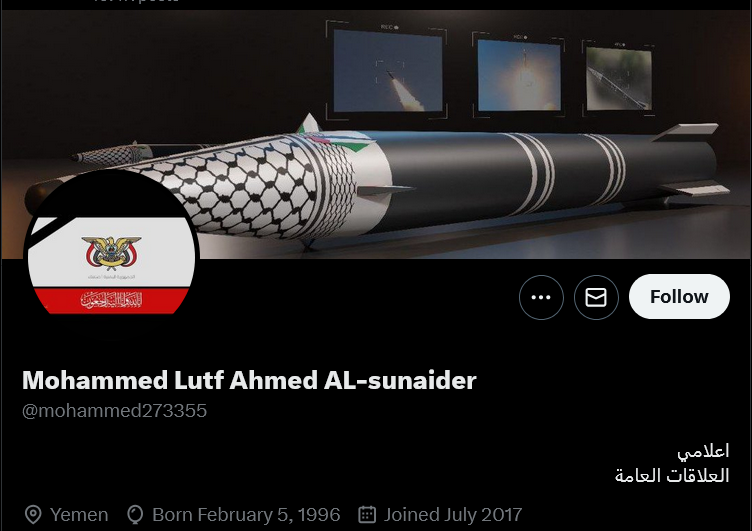
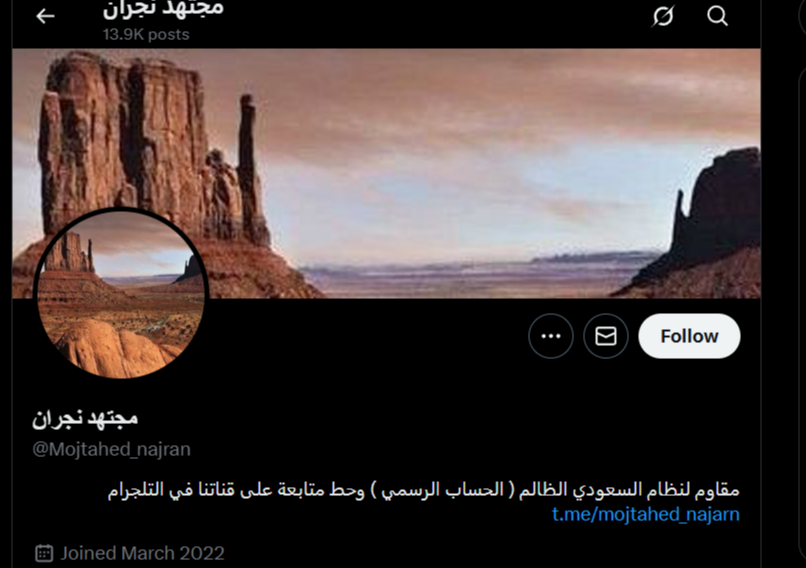
Posts from Egypt, Iraq, and Yemen were notably negative. Conversely, the small amount of positive content was frequently found in non-Arabic languages or countries.
Kickoff
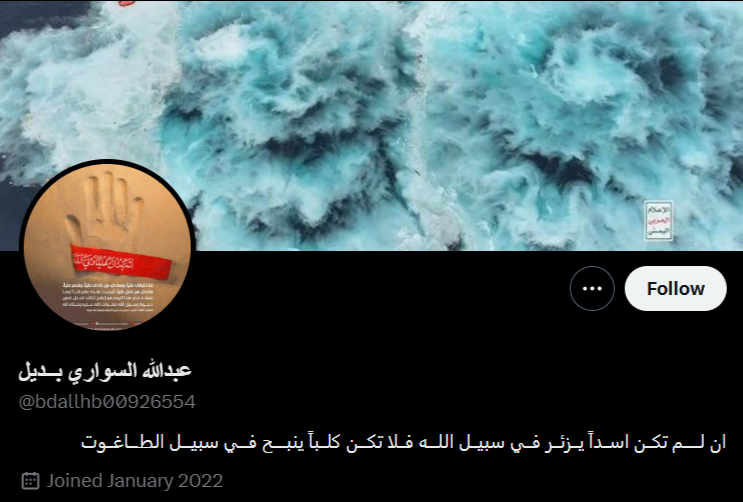
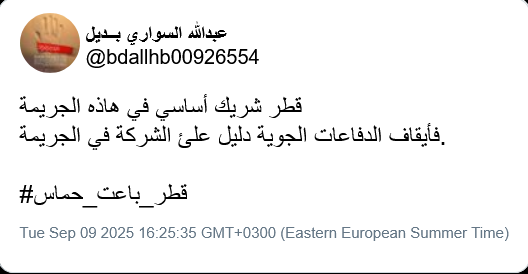
By tracing the earliest posts that initiated the campaign, it becomes clear that the hashtag #قطر_باعت_حماس (Qatar Sold Out Hamas) did not suddenly emerge at its peak on the morning of September 10. Rather, it was prepared a day earlier. The first recorded posts date back to the morning of September 9 at 09:25 GMT, when an account named Abdullah Al Suwari (@bdallhb00926554) published a post directly blaming Qatar for the “crime,” claiming that the disabling of Qatari defenses was deliberate.
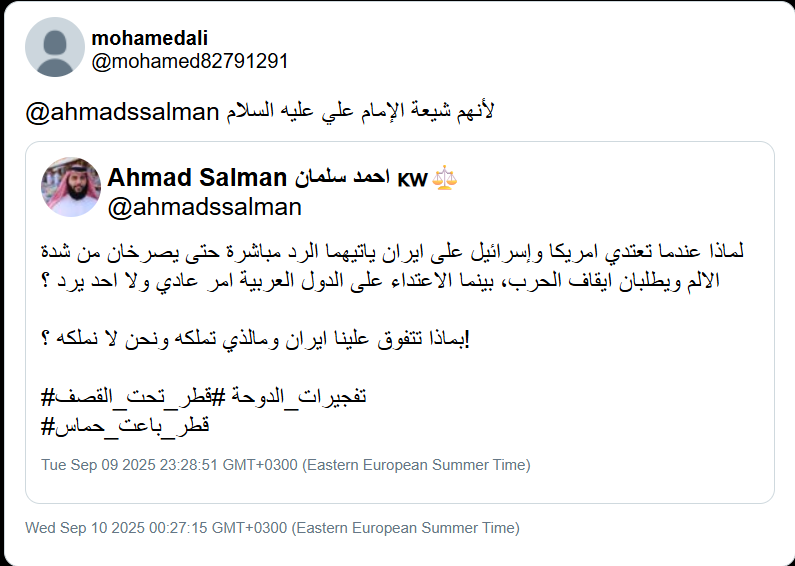
Just one minute later, another account, Mohammed Lutf Ahmed Al Sunaider (@mohammed273355), appeared to reproduce similar discourse, linking the Israeli bombing in Doha to the mediator's betrayal, using the main hashtag.
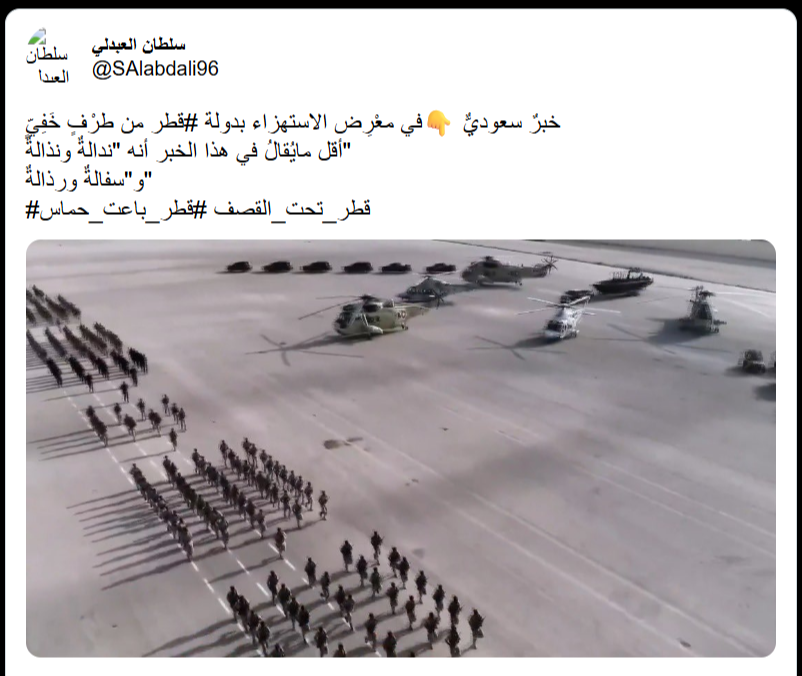
Soon after, other accounts with clear political and/or sectarian connotations joined in. Among them was Dr. Mohammed Al Marouni (@dmrwni26), who used quoted posts to repeat the “Greater Israel” narrative and link it to Qatar, and Farhan Al Farh (@frhanalfrh), one of the earliest users of the hashtag #قطر_باعت_حماس (Qatar Sold Out Hamas), alongside hashtags like #حماس (Hamas) and #غزة_تباد_وتحرق (Gaza Is Being Exterminated and Burned).
Ammar Al Yamani (@ammarb313), a Yemeni account, played a key role in amplifying the hashtag early on. This account’s activity primarily involved posting short, repetitive replies consisting solely of the hashtag or repeating it in different contexts, indicating a focus on boosting visibility rather than fostering genuine discussion.
An account named Ibrahim Al Dawlah (@ebr_dawlah) directly posted, "The truth is out for the world to see," using the hashtag as a headline. Within minutes of its publication, this post was reposted by other accounts, including Merou (@slym1921) from Algeria and Fawaz Al Mallahi (@falmlahy83) from Iraq.
This quick succession of reposts demonstrates how the campaign's central message rapidly disseminated across various regions in under five minutes from its initial launch. But which accounts were the most active in driving the hashtag—and what were their agendas?
Amplifying Accounts
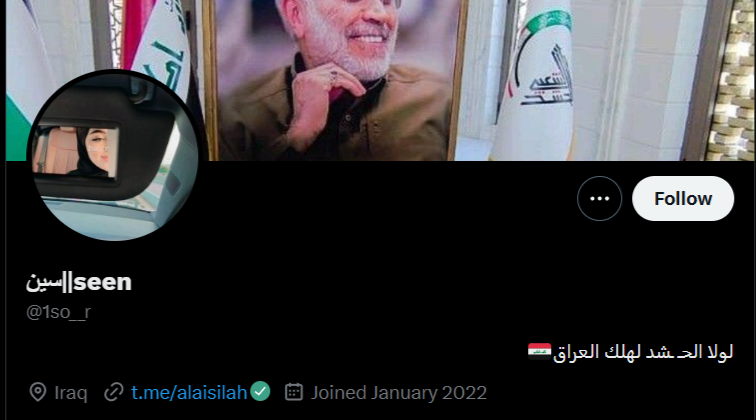
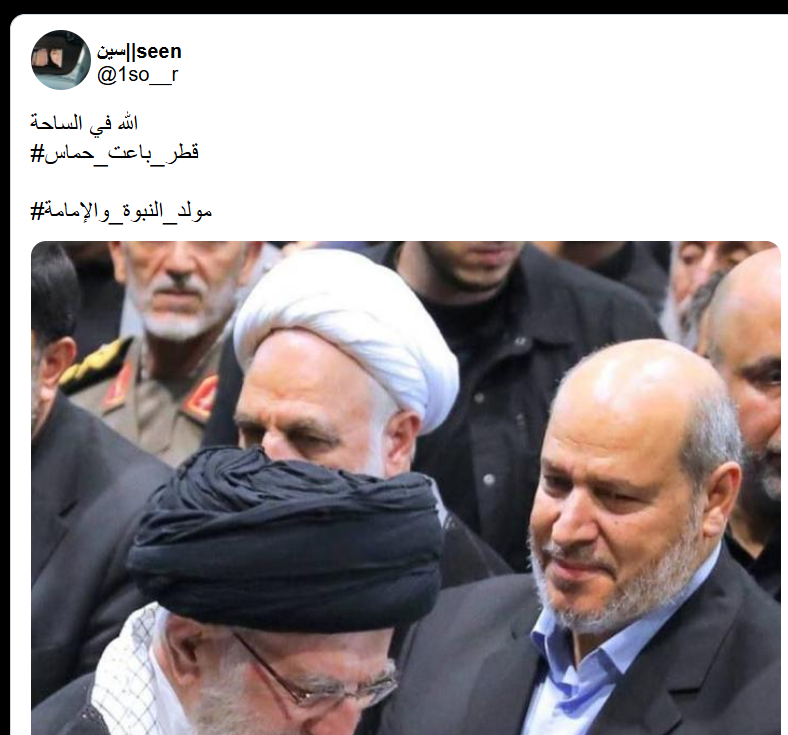
Meltwater records indicate that the hashtag #قطر_باعت_حماس (Qatar Sold Out Hamas) did not gain prominence solely due to high posting volume. Instead, its reach was boosted by central nodes that created and disseminated messages across a widespread network. At the forefront of these was the account “Seen || seen” (@1so__r), which generated nearly a thousand interactions on a single post, reaching more than 24,000 accounts. The account’s content indicates support for Iran-backed Arab groups such as Hezbollah, Ansar Allah (the Houthis), and Iraq’s Popular Mobilization Forces (PMF).
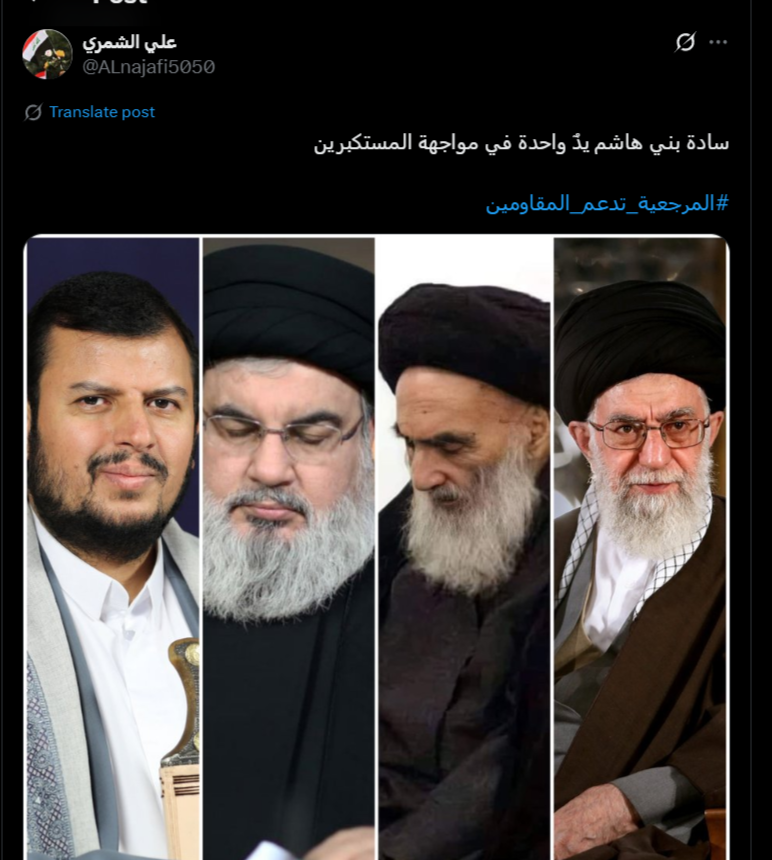
Another prominent account was that of Ali Al Shammari (@ALnajafi5050), whose two posts using the hashtag generated more than 250 interactions and an estimated reach of 32,000. Al Shammari’s posts link the Iraqi narrative with its Yemeni and Palestinian counterparts through a mix of religious and political language.
Similarly, the account of Hussein Al Rawie (@alrawie) posted only twice but garnered 149 interactions and a reach of 54,000. The account features the Iranian flag alongside those of Lebanon, Iraq, Yemen, and Palestine.
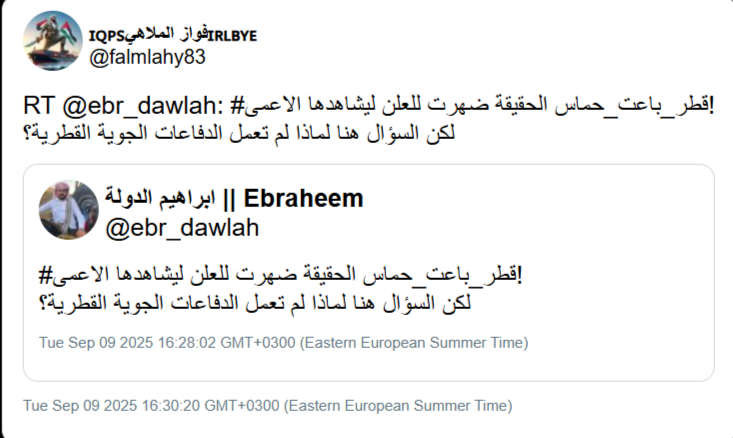
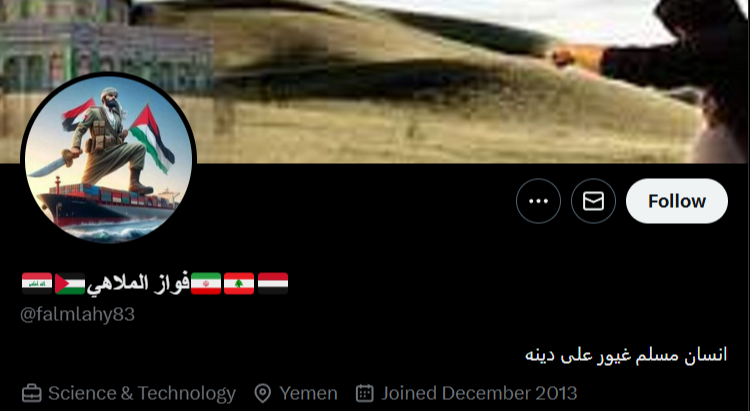
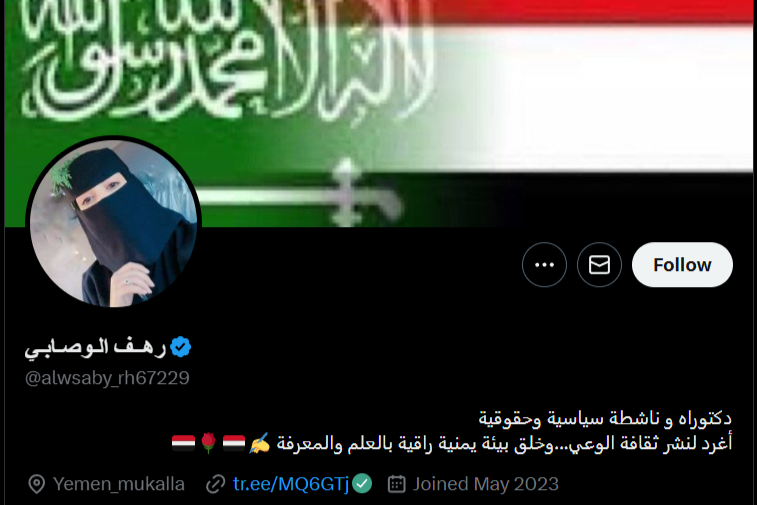
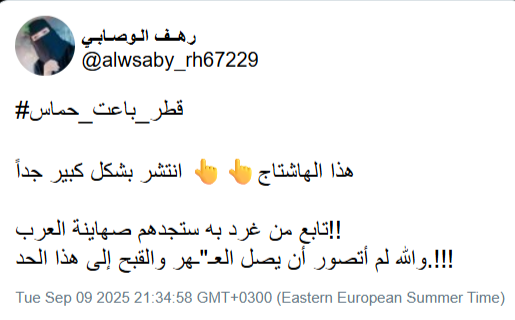
Likewise, Rahaf Al Wasaby (@alwsaby_rh67229) reached over 48,000 accounts with limited posts, confirming that the network relied on amplifiers to solidify the hashtag during peak moments.
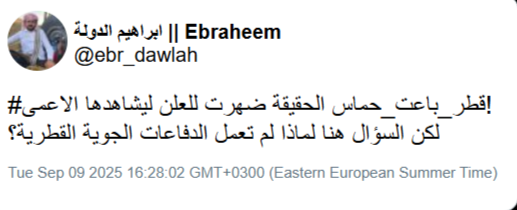
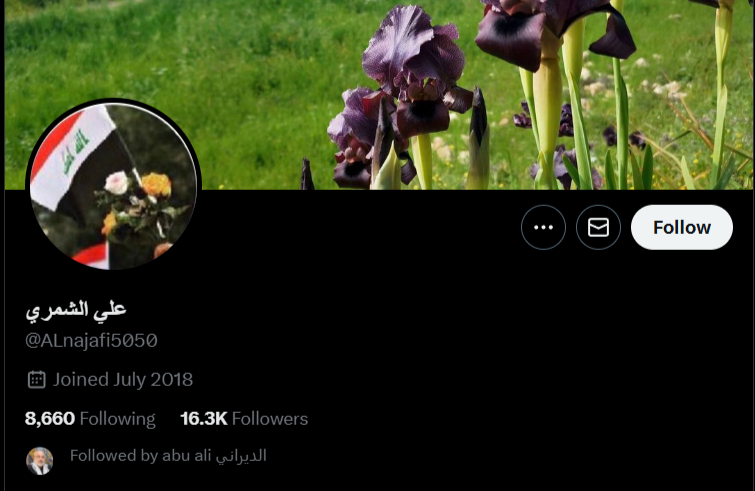
Network Analysis
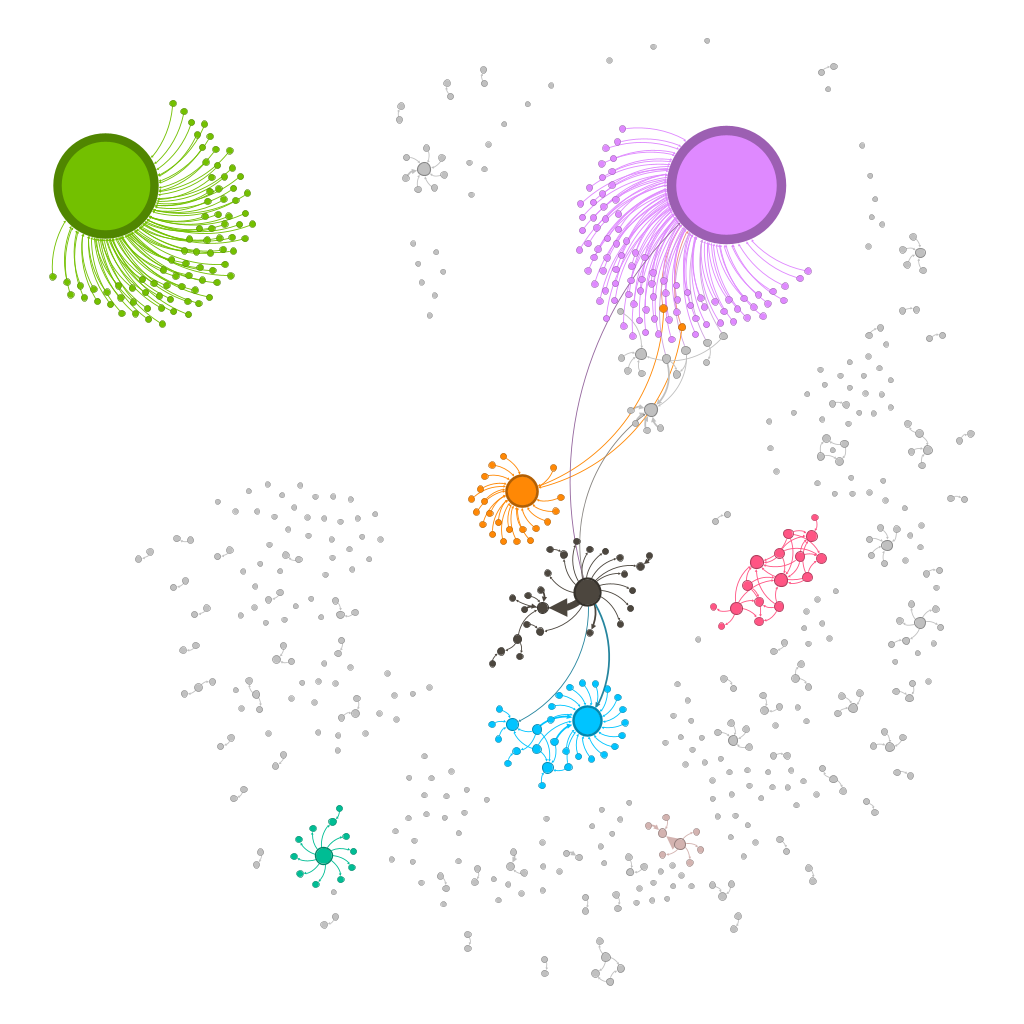
By tracking the campaign’s digital network and building an initial map of interactions among accounts, it became clear that the activity was far from random. Instead, it was structured around a cluster of central nodes that played a key role in spreading and amplifying messages.
Through analyzing retweets, quotes, and replies, several accounts emerged as highly connected hubs — most notably the account Seen || seen (@1so__r), which ranked at the top in terms of network centrality. Its posts not only generated strong engagement, as noted earlier, but also became a central linking point within the network, as many other accounts interacted with or reshared its content. This made it a “main amplifier,” effectively steering the direction of the campaign.
Next came Hussein Al Rawie (@alrawie), who, despite posting only a few times, held a high centrality score — reflecting his position as a bridge between different clusters of participants. This bridging role allowed content to flow smoothly across otherwise disconnected groups.
Other prominent nodes included Ali Al Shammari (@alnajafi5050) and Saima Asim (@saimaasimm), both of whom helped sustain the campaign’s visibility through consistent and repetitive engagement with the hashtag.
Interestingly, some other accounts that appeared less prominent or had ordinary names — such as @ummfarhan135 and @tifani78 — held surprisingly significant positions within the network despite their limited original content. These accounts acted as "echo chambers," not generating new content but instead recirculating and amplifying existing messages to broaden their audience.
In essence, the network operated on two primary layers: the central accounts, which generated content and set the narrative, and the peripheral accounts, which circulated that content in an almost automated pattern.
Automated Accounts Posing as Human
An analysis of posting and interaction patterns within the campaign revealed strong indications of accounts behaving in a semi-automated manner — reinforcing the hypothesis that amplification was not entirely organic. Although the quantitative data did not show a large number of hyperactive accounts (for instance, those posting more than 50 times within 48 hours), the most striking patterns emerged from the nature of the content itself and the near-mechanical repetition of identical texts.
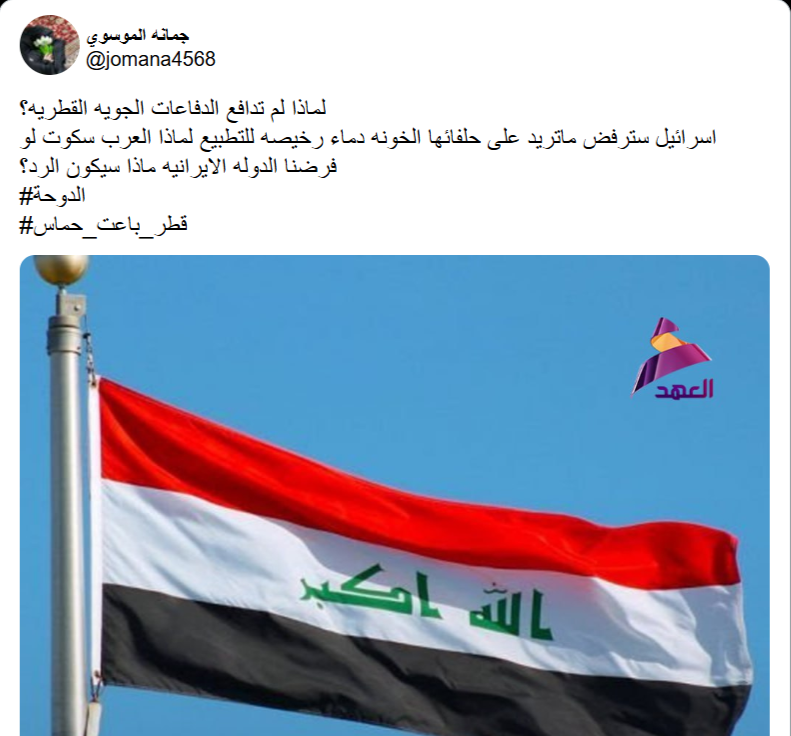
Over a thousand posts in the sample were linked to accounts that no longer exist, appearing under the phrase "This account doesn’t exist." This indicates that a significant portion of the interaction network relied on accounts that were later deleted or deactivated, possibly due to abnormal or semi-automated activity.
The data also reveals that identical texts were spread across dozens of copies. For example, a post from @ALnajafi5050 was repeated twenty-three times, while posts from @saimaasimm appeared in sixteen identical copies of one post and eight other copies of a second post. Smaller accounts like @jomana4568 also contributed to this, recycling a single text seven almost identical times.
The campaign's reliance on extensive copy-pasting to amplify the hashtag, rather than genuine diverse discourse, is evident in these practices.
